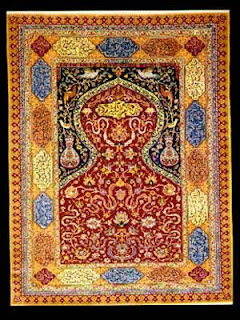 After nearly disappearing into obscurity, the hookah pipe has regained its esteem as a part of the heritage of Ottoman culture. It is not known exactly where in the Middle East the pastime emerged but it certainly holds a proud place in this culture. Hookah pipe smokers used to meet in a cafe and talk for hours with the pipe close at hand. The practice has its own etiquette in that the special tobacco is wrapped with care, and the smoke which fills the bottle is inhaled slowly, but not as deeply as if one were smoking a cigarette. Refresh the coals and this smoking pleasure lasts for hours. There are not as many hookah pipe cafes as there used to be in İstanbul as people no longer have enough time for this pastime.
After nearly disappearing into obscurity, the hookah pipe has regained its esteem as a part of the heritage of Ottoman culture. It is not known exactly where in the Middle East the pastime emerged but it certainly holds a proud place in this culture. Hookah pipe smokers used to meet in a cafe and talk for hours with the pipe close at hand. The practice has its own etiquette in that the special tobacco is wrapped with care, and the smoke which fills the bottle is inhaled slowly, but not as deeply as if one were smoking a cigarette. Refresh the coals and this smoking pleasure lasts for hours. There are not as many hookah pipe cafes as there used to be in İstanbul as people no longer have enough time for this pastime.
 Young people rediscover the hookah...
Young people rediscover the hookah...
Thanks to a variety of flavored tobacco, university students in particular have awakened to the smoking pleasure of the hookah pipe in recent years. It is because of this tobacco, flavored with such tastes as apple, apricot, strawberry and cappucino, that some new venues have opened around town to bolster the trade existing at the few old hookah cafes. What was once a masculine tradition is now changing as women are imbibing in the hookah, too. A plastic mouthpiece called a "sipsi" fits over the end of the tube. This allows everyone to affix their own mouthpiece as the tube is passed around.

Tourists enjoy the hookah pipe
Tourists have always shown interest in the hookah pipe as it allows them to experience the ways of the Orient. According to the owner of Corlulu Ali Pasa, foreigners drop by here on a regular basis while staying in İstanbul to smoke from the pipe and take the pastime further by purchasing a hookah pipe to take with them back to their country.
Hookah pipes can be smoked at home. But it doesn't have the same taste if you are smoking alone because the prerequisite of the hookah is lively banter. Many hookah pipe addicts leave their own pipes at their favorite cafes to come sit in front of for a spell.

Hookah pipe cafes
Corlulu Ali Pasa Medresesi
This medrese (school of theology) in Beyazit is one of the oldest hookah venues and is the choice of elder hookah patrons as well as students and tourists. The veranda under the plane tree is the perfect place for an extended smoke during the summer.
Rembetiko
You can find all types of hookah at this venue, which has a garden. It is one of the first of its sort on the Asian side.
Tophane cafes
There are a number of hookah cafes which have opened next to each other in the Sali Pazari neighborhood of Tophane. Despite their modern appearance, it is possible to breath in some of the mystic air from the adjacent Nusretiye Mosque.
Kasimpasa Cafe
In order to promote his place, the owner of Kasımpaşa Cafe, Salim Usta loaded up a truckload of hookah pipes and went to President Clinton's hotel during his last visit to Turkey and served the entire White House Security team.
 Helpful hints
Helpful hints
* Hookah tobacco is grown in the province of Hatay and is harsher in comparison to flavored tobacco.
* The mouthpiece which fits over the end of the tube is interchangeable. This allows everyone to affix their own mouthpiece as the tube is passed around.
* The finest hookah pipes originate in Iran. They are also made in İstanbul and İzmir.
* Oak chips are used for coals in keeping the hookah pipe lit.
* The most unusual tube mouthpieces are made from amber.
* Hookah pipes are sold at the Corlulu Ali Pasa Medresesi.
 The Caribbean island of Antigua is a veritable heaven on earth with 365 beaches. It also boats a rich history, spicy cuisine and plenty of water sports.
The Caribbean island of Antigua is a veritable heaven on earth with 365 beaches. It also boats a rich history, spicy cuisine and plenty of water sports.




%2520copy.jpg)


.jpg)












































